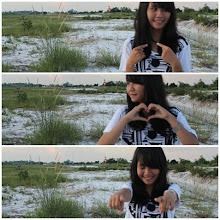-
Hi, everyone!
Welcome to my English Primbon Blog :)
This blog contain English Language materials for grade X, FIRST semester and SECOND semester
I hope my blog can help you to learn English Language
But, remember. I'm still learning too, so I'll wait for your comments and critics
Thank You =)Diposting oleh Yantia Hariesta Purnomo 0 komentar | Kirimkan Ini lewat Email BlogThis! Berbagi ke Twitter Berbagi ke Facebook |

-
This is my house!
Just kidding =D
Well, there are so many stuff in my house, such as lamp, bed, refrigerator, etc.
Now, let's learn VOCABULARY AROUND THE HOUSE! =D
Diposting oleh Yantia Hariesta Purnomo 0 komentar | Kirimkan Ini lewat Email BlogThis! Berbagi ke Twitter Berbagi ke Facebook |

-
Diposting oleh Yantia Hariesta Purnomo 0 komentar | Kirimkan Ini lewat Email BlogThis! Berbagi ke Twitter Berbagi ke Facebook |

-
The movie title is "Shall We Dance", then what is the relationship between this movie title with our topic? "Shall we dance" indicate that this phrase is in form of simple future.
Diposting oleh Yantia Hariesta Purnomo 0 komentar | Kirimkan Ini lewat Email BlogThis! Berbagi ke Twitter Berbagi ke Facebook |

-
DefinitionA preposition is a word or groups of words used before a noun or a pronoun to show place, position, time or method. The prepositions in, on, and at can be used to indicate time and place.
Prepositions: In, On, and At (with specific times and places)
The prepositions in, on, and at can be used to indicate time and place. Notice how they are used in the following situations:
Preposition Time Place In Year, Month,
In 1999, In DecemberCountry, State, City
In Japan, In Utah, InTaipeiOn Day, Date
On Saturday, On May 1Street
On Main Street, On 1st Ave.At Time
At 8:00, At 7:30Address
At 815 East Main Street
In many languages, there is only one preposition for the above situations. In English there are three. Just remember that in usually indicates the "largest" time or place, and at usually indicates the "smallest" time or place. Examples:
- A: Where's your office? B: In Taipei, Taiwan. A: Really? What part of Taipei? B: It's on Chung Shan North Road. A: I know that area. Where exactly is it? B: It's at 105 Chung Shan North Road, next to the bookstore. C: When is the wedding? D: It's in June. C: What day? D: It's on Saturday, the 25th. C: What time? D: It starts at 6:00.
Prepositions with articles and locations
When talking about locations, use at to indicate the general vicinity or area, andin to
indicate inside the building, enclosed area, etc. For example:at the swimming pool (on site) in the swimming pool (in the
pool itself i.e. in the water)at the post office/bank (general) in the post office/bank (inside the building) at the zoo (visitors, general area) in the zoo (animals in their cages) at school in the classroom
- I met my wife at the theater. (while watching a movie) I spilled my drink in the theater (on the floor of the building) She works at the library on Wednesdays. She found a rare coin in the library (building). Dr. Jones works at the hospital every day. John was in the hospital for a week with a broken leg.
For school, prison, and church, the is used to indicate the building. No articleindicates
the general situation. Note the following:"practice"/situation building in school (studying, listening to teacher, etc.) in the school (building) in jail/prison (staying there as a criminal) in the jail/prison (temporary) in church (praying, listening to a sermon, etc.) in the church (building) We use:
• at for a PRECISE TIME
• in for MONTHS, YEARS, CENTURIES and LONG PERIODS
• on for DAYS and DATES
at
PRECISE TIME
- at 3 o’clock
- at 10.30am
- at noon
- at dinnertime
- at bedtime
- at sunrise
- at sunset
- at the moment
in
MONTHS, YEARS, CENTURIES and LONG PERIODE
- in May
- in summer
- in the summer
- in 1990
- in the 1990s
- in the next century
- in the Ice Age
- in the past/future
on
DAYS and DATES- on Sunday
- on Tuesdays
- on 6 March
- on 25 Dec. 2010
- on Christmas Day
- on Independence Day
- on my birthday
- on New Year’s Eve
Look at these examples:
- I have a meeting at 9am.
- The shop closes at midnight.
- Jane went home at lunchtime.
- In England, it often snows in December.
- Do you think we will go to Jupiter in the future?
- There should be a lot of progress in the next century.
- Do you work on Mondays?
- Her birthday is on 20 November.
- Where will you be on New Year’s Day?
Notice the use of the preposition of time at in the following standard expressions:
Expression -Example
- at night -The stars shine at night.
- at the weekend -I don’t usually work at the weekend.
- at Christmas/Easter -I stay with my family at Christmas.
- at the same time -We finished the test at the same time.
- at present -He’s not home at present. Try later.
- Notice the use of the prepositions of time in and on in these common expressions:
In
- in the morning
- in the mornings
- in the afternoon(s)
- in the evening(s)
on
- on Tuesday morning
- on Saturday mornings
- on Sunday afternoons
- on Sunday evening
When we say last, next, every, this we do not also use at, in, on.
- I went to London last June. (not in last June)
- He’s coming back next Tuesday. (not on next Tuesday)
- I go home every Easter. (not at every Easter)
- We’ll call you this evening. (not in this evening)
Diposting oleh Yantia Hariesta Purnomo 0 komentar | Kirimkan Ini lewat Email BlogThis! Berbagi ke Twitter Berbagi ke Facebook |

-
Definition
Passive voice is used when the focus is on the action. It is not important or not known, however, who or what is performing the action.
In the passive sentence, the object of an active verb becomes the subject of the passive verb.
Only transitive verbs are used in the passive. Intransitive verbs such as happen, sleep, come and seem cannot be used in the passive.
Diposting oleh Yantia Hariesta Purnomo 0 komentar | Kirimkan Ini lewat Email BlogThis! Berbagi ke Twitter Berbagi ke Facebook |

-
Diposting oleh Yantia Hariesta Purnomo 0 komentar | Kirimkan Ini lewat Email BlogThis! Berbagi ke Twitter Berbagi ke Facebook |

Rss Feed
skip to main |
skip to sidebar


Super Junior's SUPER SHOW in Singapore 2012
It is not in the stars to hold our destiny but in ourselves - William Shakespeare
Search
About
Contain English materials for grade X and grade XI.
Dedicated to all people who wants to learn english.
About Me

- Yantia Hariesta Purnomo
- Palangka Raya, Central Borneo, Indonesia
- simply call me Tia. Cats-lovers and bugs-haters. XENOS (X-5 Nation) and SPIDER (Special Kids from Science Four) are the ultimate class. HASTALA VICTORIA SIEMPRE FOR SMADA
Me

Super Junior's SUPER SHOW in Singapore 2012
Blogroll
- Asking about Information
- Asking if Someone Remember or Not
- Descriptive Text
- Direct and Indirect Speech
- Finite Verbs
- Gratitude, Compliment, and Congratulation
- Introductory it
- Invitation (Written )
- Modals in Pat Form
- Narrative Text
- News Item
- Noun Phrases
- Offering
- Passive Voice
- Preposition in, on, at
- Simple Future
- Surprises and Disbelieves
- Vocabulary Around The House
Blog Archive
XENOS 'X5' Squad
My Blog List
My Blog List
Total Tayangan Halaman
Blogroll
Blogger templates
Blogger news
Snag a button
Diberdayakan oleh Blogger.
Popular Posts
-
Look at the picture! we can see that the couch were GIVING INSTRUCTION to the team. Now, read the materials so you can give instruction pr...
-
This is my house! Just kidding =D Well, there are so many stuff in my house, such as lamp, bed, refrigerator, etc. Now, let's learn V...
-
Definition Recount text is a text that used to re-tell event for the purpose informing or entertaining. The Generic structure: Orien...
-
These picture tell us about Legend story: Sangkuriang and Tangkuban Perahu. Legend story is include into narrative text. what is narrative...
-
If we want to do something or make something, there's steps which we have to follow. Just like these picture. If we want to tie a tie we...
-
What do you think about this picture? In their Tea Time, maybe they talk about our material today: Gratitude, Compliment, and Congratulation...
-
Gerunds (-ing) A gerund phrase will begin with a gerund , an ing word, and will include other modifiers and/or objects. Gerund phr...
-
When we want to start a conversation with someone, the first thing we should do is gain attention from her/him. We can use "Excuse me&...
Followers
© English Primbon - Designed by Nudge, Blogger templates by Blog and Web.









